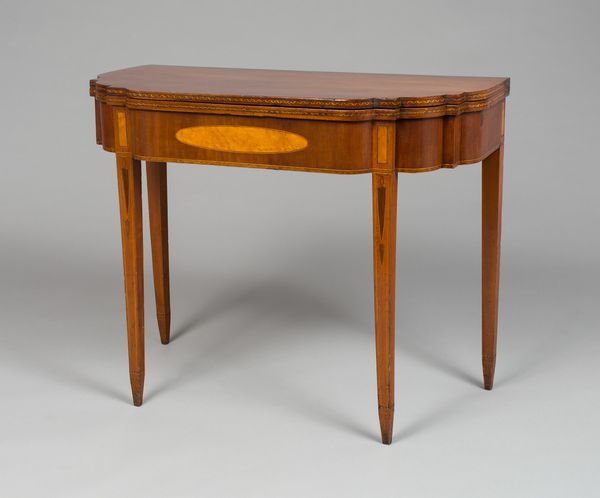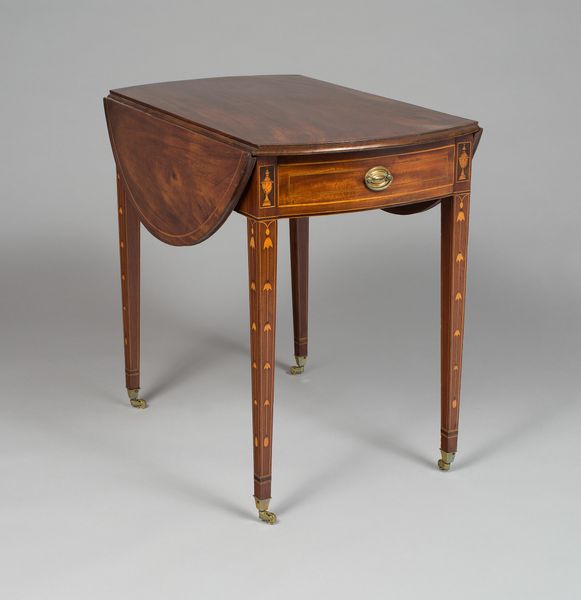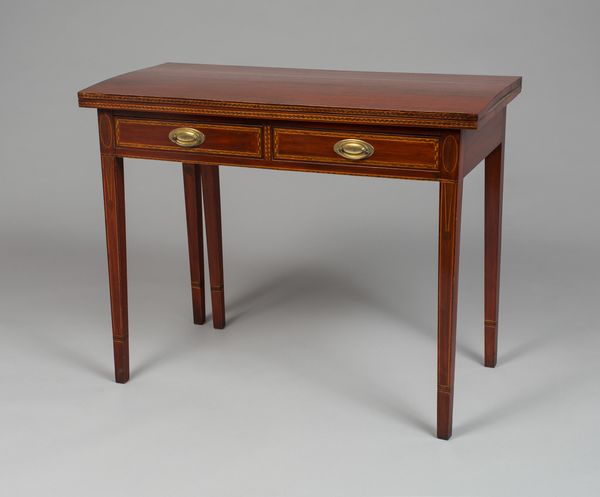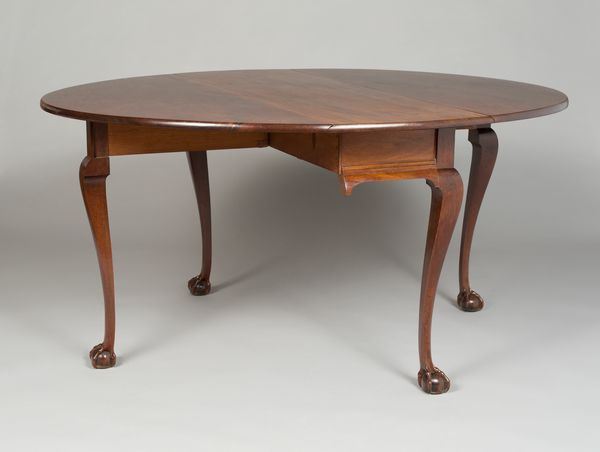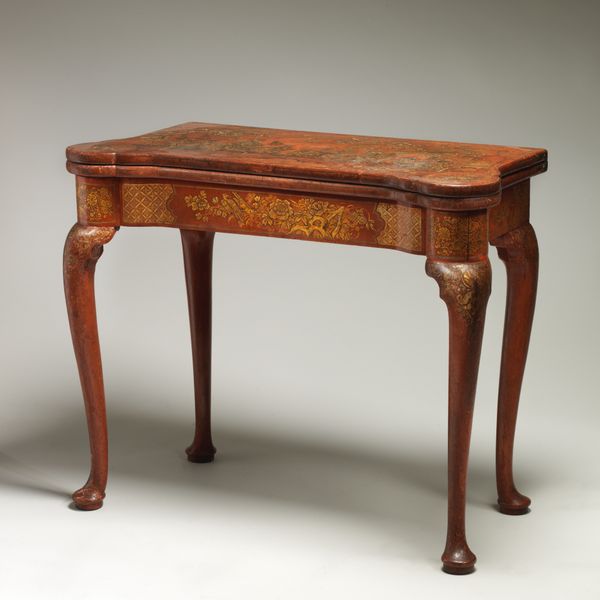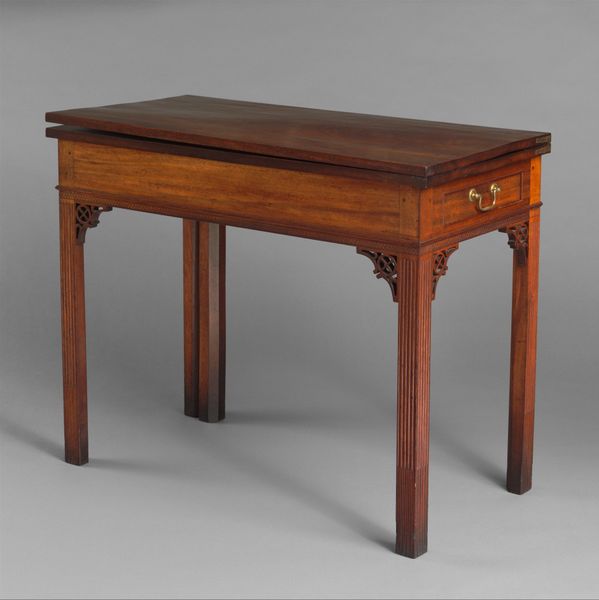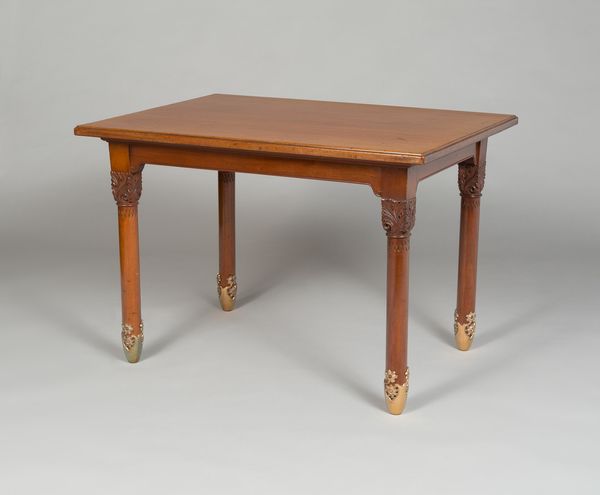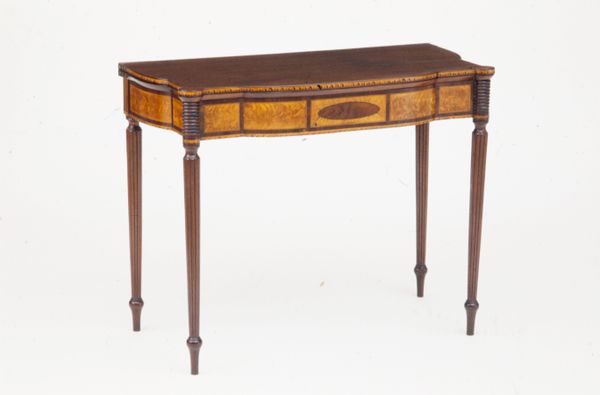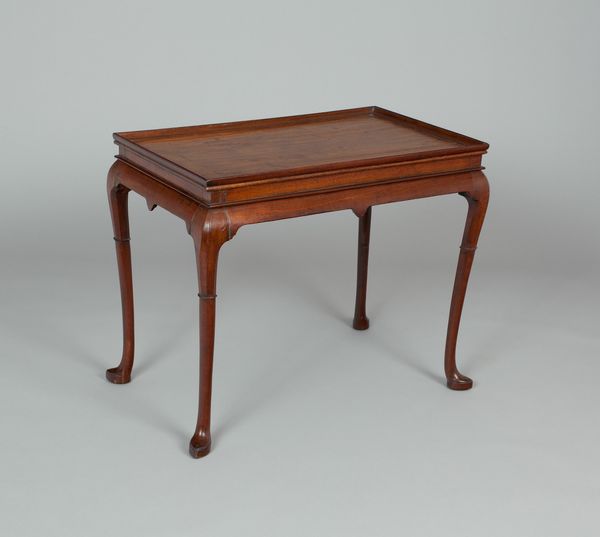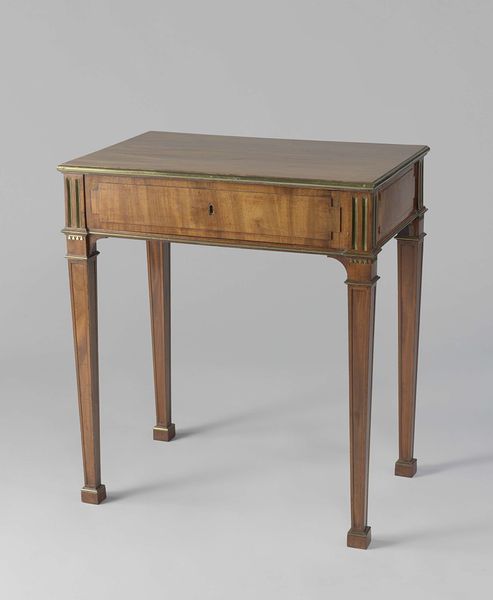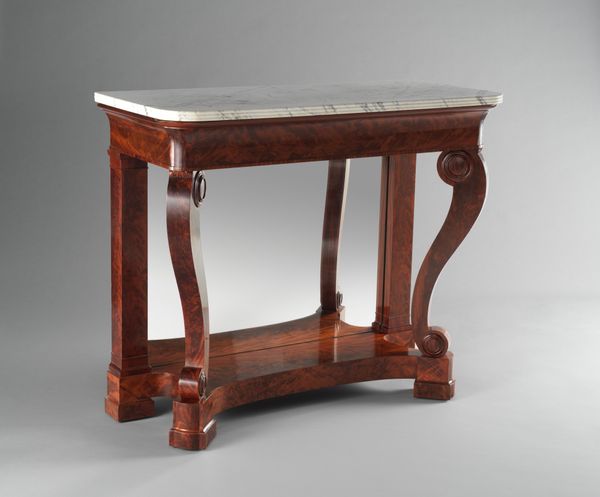
wood
#
table
#
neoclacissism
#
furniture
#
wood
#
decorative-art
Dimensions: 74.9 × 90.8 × 43.8 cm (29 1/2 × 35 3/4 × 17 1/4 in.)
Copyright: Public Domain
Curator: Here we have an example of decorative art. It's an elegant card table that dates from around 1800 to 1815, currently residing here at The Art Institute of Chicago. The maker of this wood furnishing remains unknown to us. Editor: My immediate impression is that the artist strived for symmetry. The slender, fluted legs add a delicate height that contrasts strangely with the stout top of the table. It looks poised, as though waiting. Curator: You've picked up on the stylistic cues! This table fits into the Neoclassical period. Looking at the piece, one can imagine it being made and used in a time of intense social and political upheaval; remember the French Revolution and the Napoleonic era, so rife with ambition. This little piece provides a strange window into those spaces of momentary retreat. Editor: I agree; the table speaks volumes about social status. Gambling, like any hobby, wasn't accessible to everyone; those slender legs literally stand on privilege, a support to gendered assumptions and coded power games of leisure. Curator: Yes, absolutely. Social ritual and status are so important when interpreting pieces like this. Its physical presence helps us consider the environments where decisions were being made around this table and how they affect current power structures. This table stood witness to societal changes. Editor: The material is so telling too. The selection of wood, the craftmanship... it speaks to exclusivity. Think about all the untold conversations held, all the decisions perhaps impacting enslaved peoples, that would have occurred right here. It's so easy to romanticize the object. I think it important that the table is read with critical awareness to how it participated in the power structures. Curator: I see what you mean. It allows a connection across time. Looking at a piece like this from a historical context shows how objects like this not only occupied but also shaped our culture. Editor: Examining this object forces me to consider the role of material culture in legitimizing and maintaining unequal power dynamics, prompting much needed difficult conversation and actions against injustice.
Comments
No comments
Be the first to comment and join the conversation on the ultimate creative platform.
